Africa Orientale Italiana:
Italian Pieces, Part Two
by Mike Bennighof, Ph.D.
January 2019
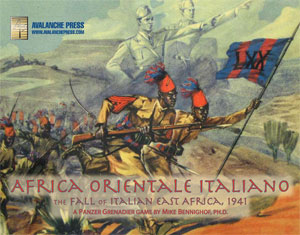 In the weeks leading up to Italy’s June 1940 declaration of war against Britain and France, belated attempts to reinforce the garrison of Italian East Africa brought some small stockpiles of fuel and lubricants, ammunition, and two companies of medium tanks. Those, together with some older vehicles left behind after the 1935-36 conquest of Ethiopia, became the backbone of Italian offensive strength in East Africa, seeing a surprising amount of action given the vast distances over which they had to be moved. In the weeks leading up to Italy’s June 1940 declaration of war against Britain and France, belated attempts to reinforce the garrison of Italian East Africa brought some small stockpiles of fuel and lubricants, ammunition, and two companies of medium tanks. Those, together with some older vehicles left behind after the 1935-36 conquest of Ethiopia, became the backbone of Italian offensive strength in East Africa, seeing a surprising amount of action given the vast distances over which they had to be moved.
That means they see a good bit of action in Panzer Grenadier: Africa Orientale Italiana, which does have tank battles. Not very large tank battles, and not very many, and not with very good tanks, but they’re in there. Let’s take a look at the tanks.
The Medium Tank
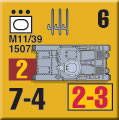 Development on a new medium tank for the Royal Italian Army began in 1932; because of the Fiat-Ansaldo combine’s monopoly position in providing armaments and its political influence it would stretch on for nearly seven years. The nearly-bankrupt Ansaldo had been bailed out by the Banco d’Italia in 1921, and promptly used its bailout money to fund Benito Mussolini’s Fascist movement and thereby secure massive military contracts leading to explosive growth and profitability. Development on a new medium tank for the Royal Italian Army began in 1932; because of the Fiat-Ansaldo combine’s monopoly position in providing armaments and its political influence it would stretch on for nearly seven years. The nearly-bankrupt Ansaldo had been bailed out by the Banco d’Italia in 1921, and promptly used its bailout money to fund Benito Mussolini’s Fascist movement and thereby secure massive military contracts leading to explosive growth and profitability.
That influence shielded Ansaldo from competition – the Army reviewed no other proposals – and allowed for a leisurely design period. The tank was finally presented to the Army in 1937, approved in 1938 and commenced its production run in January 1939.
The resulting tank, labelled the M11/39 (11 tons, Model 1939), might have been adequate in 1932 to replace the Fiat 3000 (an Italian copy of the French Renault FT17). By early 1940 it had no place on the modern battlefield, but represented the most modern Italian tank, though the far better M13/40 was on the production lines.
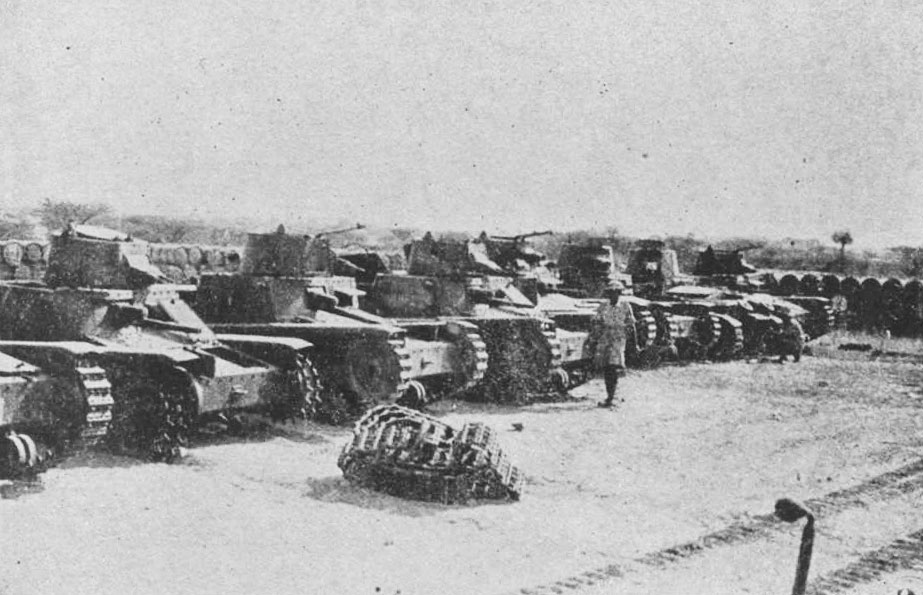
M11/39 tanks abandoned and captured at Agordat.
The M11/39 sported a 37mm main gun mounted in the hull, and a pair of machine guns in a small turret. A three-man crew (driver, loader/gunner and commander/machine-gunner) operated the machine, which had no radio and no internal intercom – crew members had to shout orders and instructions to one another over the constant roar and vibration of the 105-horsepower Fiat diesel engine. Armor was adequate against the lightweight anti-tank guns of the 1930’s, and the main gun was standard for the period, though the hull mounting greatly reduced its usefulness.
Against an enemy without any tanks at all, as the Italians faced during the invasion of British Somaliland, they could be very effective. When faced by British Matilda II tanks at Agordat they were helpless, with many disabled in action and the rest abandoned when they could not be moved over the mountain tracks.
Ansaldo built an even 100 of the machines, including four prototypes. The 96 production models initially went to the 132nd “Ariete” Armored Division, which was forced to give them up just before the outbreak of war. Seventy-two of them went to Libya, and 24 to East Africa; two had been sold to Austria in 1938 in hopes of landing an order for more but fell into German hands and may have been prototype vehicles rather than production models.
The deployment of one-quarter of Italy’s “modern” tanks to East Africa represented a major commitment, but came without much in the way of infrastructure. The shipment of tanks does not appear to have included any of the heavy trailers the Italian Army used as tank transporters, pulled behind trucks. That forced the tanks to deploy over great distances under their own power, a task for which they had never been intended and one that put considerable wear on them. The tankers kept their machines fighting for a surprisingly long time, and with some real effectiveness, but lack of spare parts would inevitably have taken the machines out of service eventually.
The Tankette
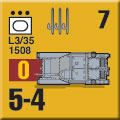 The Italian garrison of East Africa also included three dozen L3 tankettes, a mixture of 33 and 35 models. The small vehicle weighed in at less than three tons, was not particularly fast, and sported thin armor suitable for keeping out rifle fire and little more. During the conquest of Ethiopia the defenders had discovered that they could grab hold of the tiny tanks and, with enough men present, flip them over. The Italian garrison of East Africa also included three dozen L3 tankettes, a mixture of 33 and 35 models. The small vehicle weighed in at less than three tons, was not particularly fast, and sported thin armor suitable for keeping out rifle fire and little more. During the conquest of Ethiopia the defenders had discovered that they could grab hold of the tiny tanks and, with enough men present, flip them over.
The L3/33 (originally labelled CV33) carried a single Fiat 6.5mm machine gun; the otherwise identical L3/35 (formerly the CV35) had a pair of much more effective Breda 8mm machine guns. They had the virtue of being cheap to produce, allowing a relatively poor country like Italy to build over 2,000 of them and sell them to a number of foreign customers ranging from Austria to Afghanistan. A few were converted to artillery tractors but did not prove very useful in that role; the L3 was simply too small to use as the basis for a modified fighting vehicle as happened with other obsolete tanks.
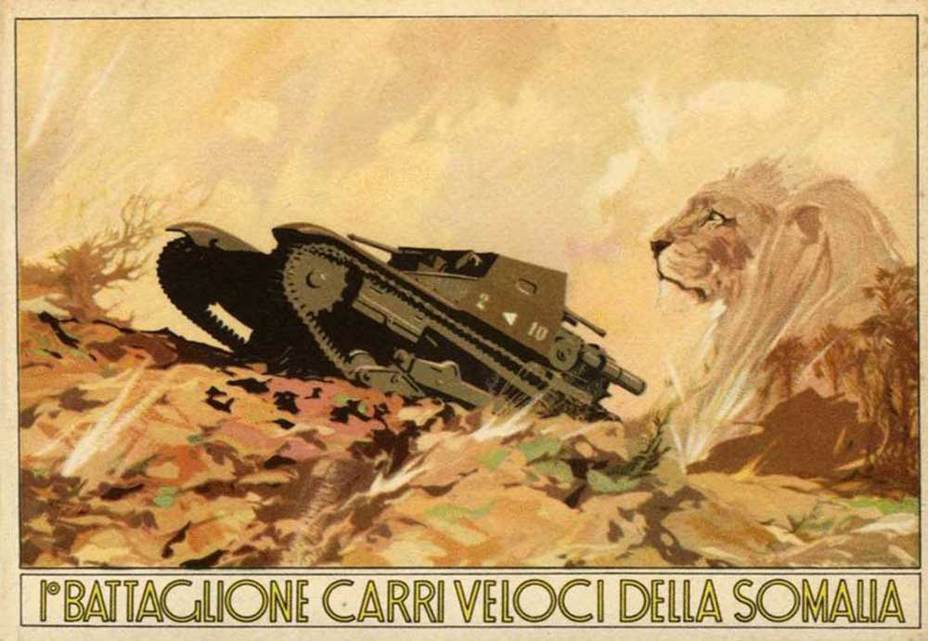
Reality wasn’t quite this way.
In East Africa, most if not all of the L3/33 models had been upgraded to L3/35 standards by the time war began, with two machine guns rather than one. Most had been concentrated in Eritrea, but several of the cavalry groups had a small squadron attached. While they had not intimidated the Ethiopians during the conquest, on at least one occasion their presence panicked raw South African troops.
These vehicles likely had little better outlooks regarding maintenance, but were far easier to transport. Even so, the Duke of Aosta, commander of the Italian garrison, didn’t transfer them between fronts as he did the medium tanks – likely because they did not have enough combat power to make expenditure of his limited fuel stockpile worthwhile.
More Tanks!
The first printing of Africa Orientale Italiana used the small stockpile of sheets of playing pieces left over from our old, long out-of-print Desert Rats game. So there are lots of extra tanks included in these copies: M13/40 and M14/41 medium tanks, P26/40 heavy tanks, and Semovente 47/32, 75/18 and 90/53 self-propelled artillery. They don’t appear in any of the scenarios, but that doesn’t stop you from playing with them anyway (you get a lot of extra British tanks, too, so you’ll have somebody to fight against).
You can order Africa Orientale Italiana right here.
Sign up for our newsletter right here. Your info will never be sold or transferred; we'll just use it to update you on new games and new offers.
Mike Bennighof is president of Avalanche Press and holds a doctorate in history from Emory University. A Fulbright Scholar and award-winning journalist, he has published over 100 books, games and articles on historical subjects.
He lives in Birmingham, Alabama with his wife, three children and his dog, Leopold.
|
